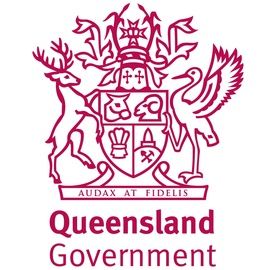Recent academic evidence revealed by a tertiary focused study suggest that overassessment may in fact be harmful to student learning.1
This article extends the discussion to a secondary context and explores such perspectives, with a critical focus on the effects of high frequency summative assessment and potential solutions which secondary schools may adopt.
When summative assessment is prioritised over learning, this can generate an incomplete image of retained student knowledge. A student who performs badly under test conditions may not accurately demonstrate their full knowledge.
Therefore, grading should be an accurate representation of a student’s holistic academic performance. When we only assess in a summative capacity this obfuscates a student’s authentic understanding.
The emphasising of summative assessment has a negative feedback loop; it encourages ‘teaching to’ assessment and leads to students prioritising their performance over genuine learning.
The emphasis of a learning program should not be on a performance outcome, but a learning outcome; that is a focus on the learning retained in the topic studied.
An over-reliance on summative assessment creates a process which minimises the learning phase of the teaching and learning cycle.
A balance should therefore be restored between formative and summative learning. Such a shift requires alterations within teaching pedagogy and the willingness of schools to support this.
To generate balance between assessment types, formative learning should be extended in the introductory phase of an enacted unit.
Change is also needed from a student perspective. Formative work should be encouraged and viewed as a relevant and important element of the learning process.
This requires educating students on the long-term benefits that meaningful learning provides. Where individual grades will eventually fade into memory and school reports invariably become dated, it is not the performance that counts; it is the knowledge that gets remembered, the skills which are developed and the characteristics which are formed - that is what remains.
Formative learning provides students with an environment to experiment and learn without pressure. One 2013 study on stress and education in tertiary nursing programs found a definitive causational link between stress and impacted learning.2
The Reeve et al study builds on the work of Rowbotham (2010), who emphasises the important role of trust between teacher and student.
When teachers make students feel ‘safe, respected and trusted’ they ‘feel more motivated and learn more effectively’.
To illustrate these findings, imagine two driving instructors. The first instructor has quite a firm and meticulous style. His students often are afraid of being punished for potential mistakes.
Consequently, a negative atmosphere is created because students know that their mistakes will be punished. They receive little constructive feedback, and many students consider the driving lessons stressful.
Now imagine a second instructor, he has a more approachable style, but is still firm on expectations. He uses constructive feedback and endeavours to create a calm atmosphere. Most students feel comfortable and ask questions when learning various new skills.
There will be key differences between how students of Instructor 1 and Instructor 2 learn. The stress created by the first instructor will be likely to slow student learning and impair their ability to retain information.
Whereas the students of the second instructor are likely to learn and retain skills at a higher rate than the students learning under Instructor 1.
The analogy of the two driving instructors demonstrates the effect that stress has on performance and assessment. Both Reeve and Rowbotham conclude that lower-stress environments increase a participant’s capacity to learn.
Similarly, teachers also have this choice when we take steps to create positive classroom environments. Formative assessment is one tool which enables teachers to provide a constructive environment.
When we prioritise summative assessment, the opportunity students have to try different approaches is abated.
However, when we allow young people to explore different options, express creativity and not be narrowed by singular forms of expression we increase the potential for longer-term learning.
Over-emphasising summative assessment also has the potential to negatively affect teachers. Teachers should be careful not to minimise the formative components of a unit.
Formative sections develop student skills by creating opportunities for students to learn from their mistakes and subsequently apply this learning in later summative assessment.
It is unwise to remove formative learning in favour of pure summative assessment, a unit that does this, lacks in key areas.
Quality teaching builds student skills through instruction and works to gradually release responsibility. Quality practices should allow students to feel prepared to begin an assessment with confidence and apply learning to various contexts and situations.
Teachers have options in the way they may approach providing formative assessment in their respective classroom contexts.
First requires balancing the quantity of time dedicated to summative and formative assessment. Expanding formative learning experiences gives students the space to develop essential skills.
A failure to include this overextends students prematurely.
Options for formative assessment are vast: question and answers, class discussions, written short and extended responses, quizzes and debates are all appropriate examples to name but a few.
These provide similar benefits as summative assessment, but are presented with less pressure on students to perform.
It also provides students with the opportunity to collaborate more and express their thinking with their peers, both are effective strategies for learning.
Summative assessment should be used as the consolidation for formative learning established in the introductory and exploratory phases of a unit.
However, limitations do exist for teachers aiming to embed more formative learning in their unit design.
Lesson time and summative reporting deadlines are two such barriers. A teacher compelled to have a certain number of summative assessments completed before a reporting deadline may be hard pressed to include more formative tasks, or may be worried that increased formative workload will provide less opportunity for students to complete a summative piece to an acceptable standard.
They may have concerns that it will negate their students results. These are valid limitations which can only be overcome if schools are able to accurately understand and report upon learning which is not being formally assessed.
For that to occur, school wide consensus and community engagement must accurately express that such changes in assessment and reporting practices are beneficial to students.
Such a change would be salutary to most educators, providing further options for their students and reducing assessment pressures.
Some critics could argue that too much formative learning would detract from quality outcomes. While I concede that too much formative learning has the potential to overdraw against summative work, an effective path is a greater balance between them.
Providing students with the ‘space to learn’ without the pressure of being assessed only stands to benefit teachers and students.
Far from lowering standards, this allows our students to be more collaborative, more open to learning and more divergent in the ways they can present their knowledge and understanding.
Such actions may have some impact on improving quality secondary education in Australia.
If we are to work toward this goal, we need to look at pedagogical practices squarely and reform based on evidence-based approaches.
Increased formative learning is one such practice that reflects this objective.
A present potential overemphasis on summative assessment may be creating a cycle which values performance over learning and generates a discrepancy of time which minimises rich formative learning experiences.
We cannot deprive young people of these opportunities to expand their thinking.
Redressing the balance between formative and summative assessment may be one approach to ameliorate the present challenges in contemporary secondary Australian education.
References
1. Scully, G., & Kerr, R. (2014). Student Workload and Assessment: Strategies to Manage Expectations and Inform Curriculum Development. Accounting Education, 23(5), 443–466. https://doi.org/10.1080/09639284.2014.947094
2. Reeve, Kristen & Shumaker, Catherine & Yearwood, Edilma & Crowell, Nancy & Riley, Joan. (2012). Perceived stress and social support in undergraduate nursing students' educational experiences. Nurse Education Today. 33, 419-429. https://doi.org/10.1016/j.nedt.2012.11.009
3. Rowbotham, M. (2010). Teacher Perspectives and the Psychosocial Climate of the Classroom in a Traditional BSN Program. International Journal of Nursing Education Scholarship, 7(1). https://doi.org/10.2202/1548-923X.1808














